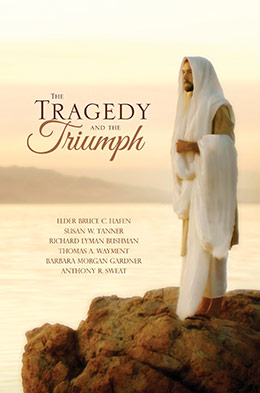The Tragedy and Triumph of Resurrection
Thomas A. Wayment
Thomas A. Wayment, "The Tragedy and Triumph of Resurrection," in The Tragedy and the Triumph, ed. Charles Swift (Religious Studies Center, Brigham Young University; Salt Lake City: Deseret Book, 2019), 49–83.
Thomas A. Wayment was professor of classical studies at Brigham Young University when this was written.
In religious terms, the resurrection of Jesus Christ has borne the weight of the Christian faith for nearly two millennia. Those wishing to reduce Christianity to a series of historical events have suggested that without the resurrection of Jesus Christ there would be no possibility for Christian faith and belief. For believers, the resurrection is a central tenant of belief, both iconographically and theologically. For me—and this short presentation is fundamentally about my own engagement with the resurrection—this historical event is both important and irrecoverable, so that any insistence on history quickly evolves into a hope in something historical. Furthermore, I can only see and experience the resurrection of Jesus through the eyes and emotions of those who wrote about it. For that reason, I think the emotional responses of Jesus’s followers are more important than the historical event for this study. It matters little whether they wrote their feelings down thirty, fifty, or even seventy-five years after Jesus died. What matters is that they attempted to convey what they felt when they encountered the resurrected Jesus for the first time.
 Jorge Cocco, It Is Finished
Jorge Cocco, It Is Finished
Resurrection was a tragedy before it was a triumph. J. R. R. Tolkien coined the word eucatastrophe to describe a very specific moment in a story. He said, “For I coined the word ‘eucatastrophe’: the sudden happy turn in a story which pierces you with a joy that brings tears, (which I argued it is the highest function of fairy-stories to produce). And I was there led to the view that it produces its peculiar effect because it is a sudden glimpse of Truth, your whole nature chained in material cause and effect, the chain of death, feels a sudden relief as if a major limb out of joint had suddenly snapped back.”[1] I would assert that the resurrection of Jesus Christ is on one level a catastrophe, perhaps even a eucatastrophe, that has been often overlooked due to the fact that the historical event has become intimately intertwined with its positive consequences and results.
I think the reason for the overshadowing of the catastrophe of the resurrection is captured well in the words of the nineteenth-century French philosopher Paul Ricoeur, who stated, “If the Resurrection is resurrection from the dead, all hope and freedom are in spite of death.”[2] In other words, a life in the hope of resurrection is possible only because resurrection has removed the sting of death, or as Paul said, “Where is thy sting? O grave, where is thy victory?” (1 Corinthians 15:55). Resurrection has a way of dominating the autonomy of our concerns for our lives, but in dominating them it also gives direction, purpose, and even hope. A person’s sufferings, for example, which are far more immediate and visible, may be reinterpreted and resignified based on the anticipation of the resurrection. But a resurrection-centered Christian existence is a modern experience, one that took time to develop and germinate sufficiently so that it could yield the fruit of hope.
I want to consider the catastrophe before allowing hope in the resurrection to dominate my thinking, and in doing so I think that we may recover a different kind of hope, or a different vantage point on hope. I also want to move the discussion away from history and ask the question of why a Christian believer would write about the fear they felt so many years after the historical events transpired. In the accounts left to us by Jesus’s early disciples concerning the morning of the resurrection and the few days that followed it, each of the four evangelists described the primary emotion felt by those who went to the tomb or who saw Jesus. That emotion was fear, and fear, doubt, and uncertainty punctuate the evangelists’ accounts.
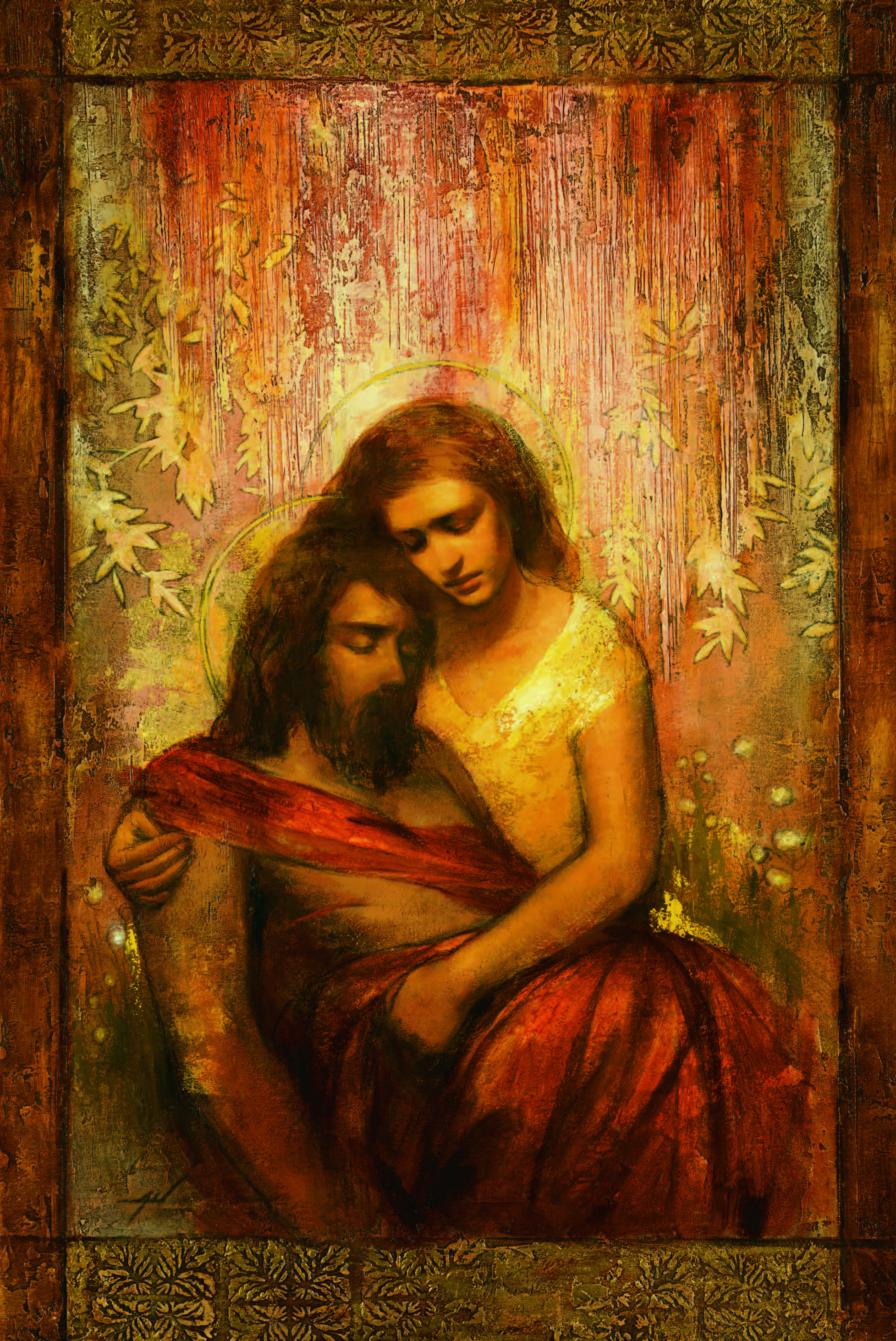 Annie Henrie, Mary and Jesus. © Annie Henrie Nader
Annie Henrie, Mary and Jesus. © Annie Henrie Nader
In the words of Matthew: In simple terms, Matthew’s account is one that is punctuated by Jesus’s female followers and disciples feeling fear and joy, but also doubt. One passage in particular captures Matthew’s point of emphasis: “And they departed quickly from the sepulchre with fear and great joy” (Matthew 28:8; see also verses 5, 10). Matthew omitted the emotions expressed by Jesus’s male disciples when he gave them the great commission to take the gospel to all nations, but he noted that, surprisingly, some of them doubted Jesus when they saw him (see Matthew 28:17).
In the words of Mark: Mark’s account of the resurrection of Jesus is also punctuated by fear, and he adds the additional note that some trembled: “And they went out quickly, and fled from the sepulchre; for they trembled and were amazed” (Mark 16:8; see also verse 6). Again, the male disciples are noticeably absent in the resurrection accounts (see Mark 16:1, 10).
In the words of Luke: Luke reported more than the other evangelists regarding the feelings surrounding the resurrection. Some of the key passages are “They were much perplexed thereabout,” “They were afraid, and bowed down their faces to the earth,” and “Certain women also of our company made us astonished” (Luke 24:4, 5, 22). Luke also notes the terror of the resurrection: “Jesus himself stood in the midst of them, and saith unto them, Peace be unto you. But they were terrified and affrighted” (Luke 24:36–37; see also verses 11, 21, 38, 41). Luke’s account also describes a burning felt by two disciples as they walked with the resurrected Lord: “And they said one to another, Did not our heart burn within us?” (Luke 24:32). (I should add that burning is a negative concept in the New Testament.)
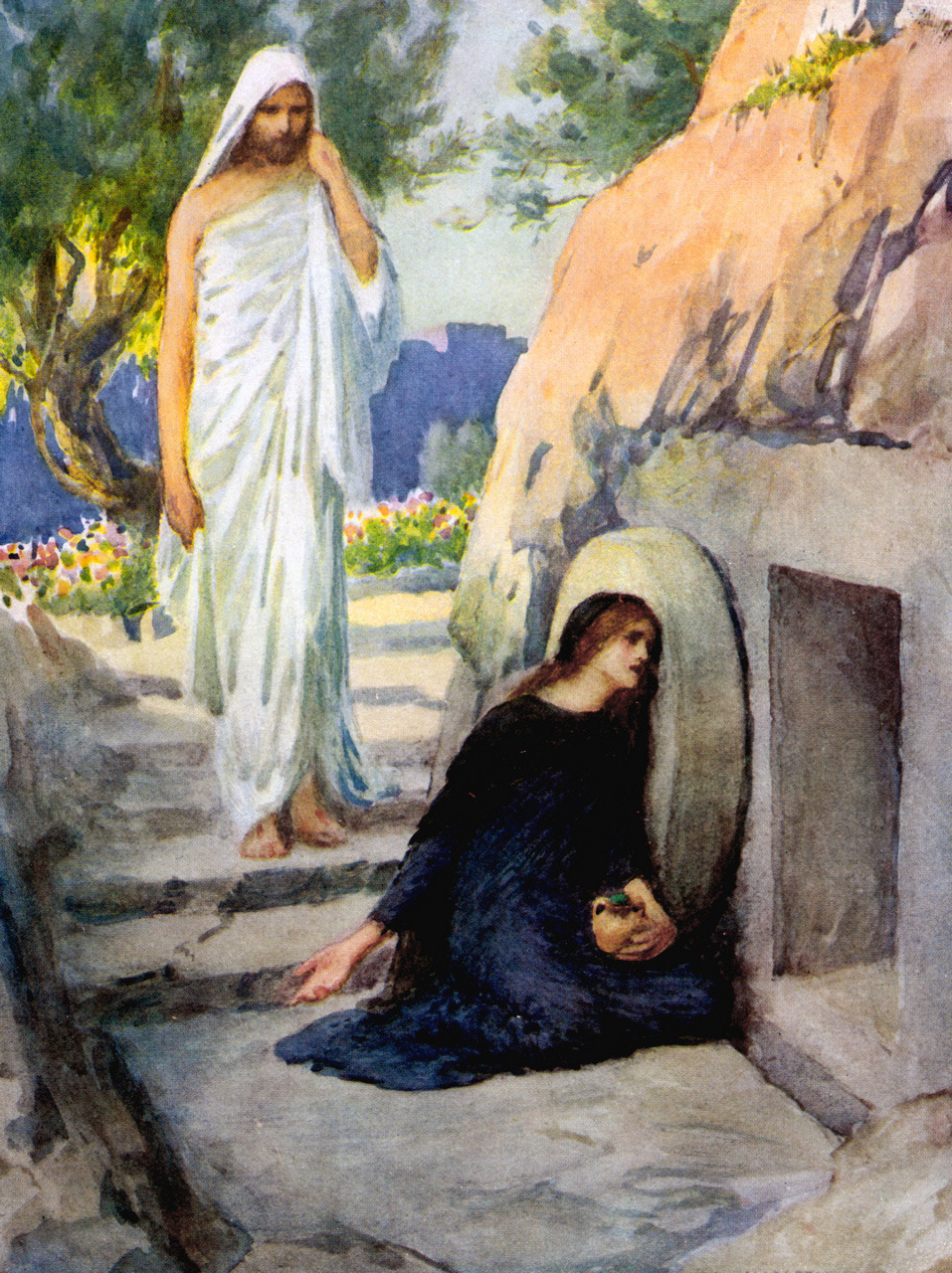 William Henry Margetson,
William Henry Margetson,
courtesy of Waiting for the Word, Flickr.com
In the words of John: John’s account finds its focus in the experience of Mary Magdalene, who went to the tomb but found it empty. Her story, if it were a modern one, would be triumphant, but instead to Mary it was tragic. Upon finding the empty tomb, “Mary stood without at the sepulchre weeping” (John 20:11). Following Mary’s experiences with the Lord, the disciples continued to feel fear: “Then the same day at evening, being the first day of the week, . . . the doors were shut where the disciples were assembled for fear of the Jews” (John 20:19).
Twice the New Testament Gospels suggest that some disciples felt joy. The final two verses of the Gospel of Luke record, “And they worshipped him, and returned to Jerusalem with great joy: And were continually in the temple, praising and blessing God” (Luke 24:52–53), and John notes that the disciples were “glad, when they saw the Lord” (John 20:20).
Resurrection: Proposal 1
I would like to propose three reasons why fear is the dominant emotion of the first resurrection accounts. First, an expression of fear may be a feature of respect and reverence meant to show that the earliest disciples approached the resurrected Jesus with appropriate devotion. The transition from mortal Lord to resurrected and deified Lord was a difficult one that needed time to develop fully. They had dined with the mortal Jesus and they had walked with him, but the transition to worshipping him directly was made obvious through the resurrection. However, it must have taken time for them to become accustomed to doing so.
Also, fear has negative connotations in modern religious vocabulary, but it is a positive emotion in many biblical contexts. For example, it is reported that “the fear of the Lord, that is wisdom; and to depart from evil is understanding” (Job 28:28). Or in the words of Paul, “Wherefore, my beloved, as ye have always obeyed, not as in my presence only, but now much more in my absence, work out your own salvation with fear and trembling” (Philippians 2:12). In the biblical world, religious devotion was expressed in terms of fear, trembling, gratitude, and reverence. A person’s fear of the Lord was a statement of orientation toward God, and there was perhaps no better way to express a proper level of devotion than through a statement of fear. The disciples were not afraid of Jesus, but they were afraid of the resurrected Lord. A shift in their relationship had taken place, and they wanted to express that fundamental shift in the ways they retold the story of the resurrection.
Although this sense of fear was not directly a tragedy, it signified a radical and perhaps even soul-rending departure from an old relationship to a new one. I certainly believe that the disciples were respectful of Jesus while he lived with them, but the resurrection had to have changed the ways they thought of him. It must have caused them to reinterpret previous conversations, interactions, and sayings. A resurrected mortal must have been both alarming and comforting, and the resurrected Lord could certainly never return to being mortal again. They required new types of relationships.
You and I might tell the story using the language of reverence and worship, but I would contend that the most respectful way that they could tell the story was through using the language of fear. I would go as far as suggesting that by writing that they feared the Lord in his resurrection, the evangelists were acknowledging their acceptance of Jesus Christ as their Lord and God.
Resurrection: Proposal 2
 Harry Andersen, The Crucifixion.
Harry Andersen, The Crucifixion.
My second point that I wish to make is that the death of Jesus ended friendships and relationships that were not restored through resurrection. Christians had no sense of a triumphal Jesus returning in the glory of the Second Coming to remedy their sense of tragedy. So much of how we understand Jesus and the resurrection is derived from sources that early Christians did not have: the New Testament, the Book of Mormon, and the Doctrine and Covenants.
The few teachings on the subject of resurrection from the Old Testament carry a mixed meaning:
And many of them that sleep in the dust of the earth shall awake, some to everlasting life, and some to shame and everlasting contempt. (Daniel 12:2)
O remember that my life is wind: mine eye shall no more see good.
The eye of him that hath seen me shall see me no more: thine eyes are upon me, and I am not.
As the cloud is consumed and vanisheth away: so he that goeth down to the grave shall come up no more.
He shall return no more to his house, neither shall his place know him any more. (Job 7:7–10)
Thy dead men shall live, together with my dead body shall they arise. Awake and sing, ye that dwell in dust: for thy dew is as the dew of herbs, and the earth shall cast out the dead. (Isaiah 26:19)
For I know that my redeemer liveth, and that he shall stand at the latter day upon the earth:
And though after my skin worms destroy this body, yet in my flesh shall I see God:
Whom I shall see for myself, and mine eyes shall behold, and not another; though my reins be consumed within me. (Job 19:25–27)
The Latter-day Saint King James Version of the Old Testament is 1,184 pages long, and these nine verses represent the corpus of teachings about the resurrection. The New Testament contains clear teachings about the resurrection, but even it indicates that some individuals thought that only the righteous would be resurrected.
But they which shall be accounted worthy to obtain that world, and the resurrection from the dead, neither marry, nor are given in marriage. (Luke 20:35)
If by any means I might attain unto the resurrection of the dead. (Philippians 3:11)
Nothing in the life of Jesus fully prepared his followers for the radical departure that was necessitated by the crucifixion. In the days following Jesus’s death, when his followers were dealing with feelings of rage against injustice, coping with the meaning of a betrayal, and trying to understand how a disciple like Peter could deny the Lord, Jesus presented himself to them alive. The resurrection may have been a triumph in salvation, but it provided no clarity of meaning for the events that had just transpired. Peter was still Peter, Judas had gone away, and the disciples’ lives were still in danger. But perhaps most tragically, mortal relationships were changed forever. Anyone who has experienced the loss of a loved one appreciates the sense that death is not a solution but a powerful moment of reflection and change.
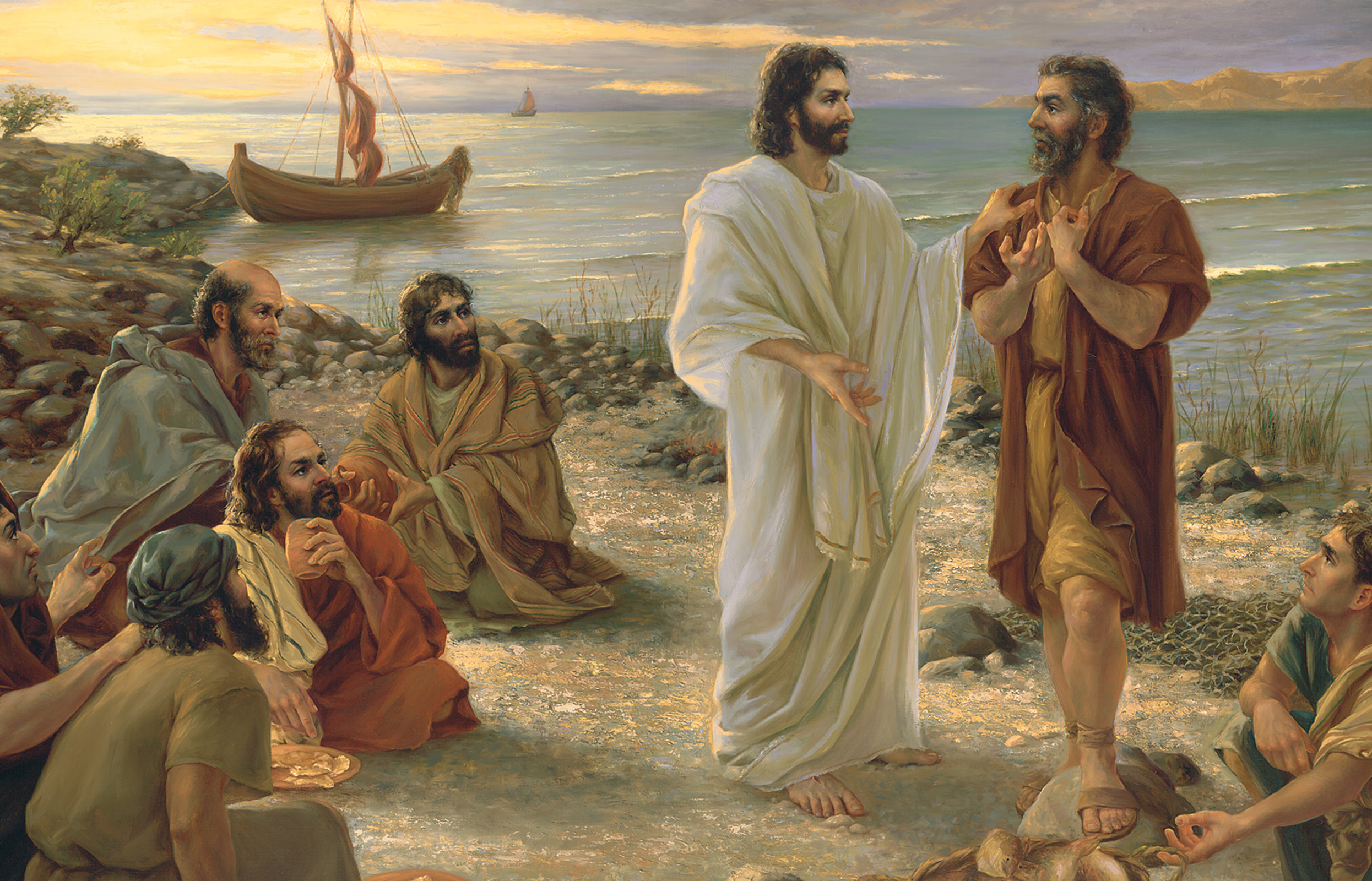
I think that Nelson Mandela captured what I am trying to say well. He said, “I learned that courage was not the absence of fear, but the triumph over it. The brave man is not he who does not feel afraid, but he who conquers that fear.”[3] Pain had to give way to courage, and the fear of seeing Jesus in new ways had to eventually develop into productive ways to process the feeling of fear and become something new. Peter’s voice attests to this sense of loss and new beginning: “By his great mercy he has given us a new birth into a living hope through the resurrection of Jesus Christ from the dead” (1 Peter 1:3 NRSV). What remains unstated is that Peter lost a friend in the crucifixion and gained a Lord in the resurrection.
Resurrection: Proposal 3
Finally, the triumph of the resurrection was Jesus’s triumph first and foremost, and over time it became the triumph of all Christians. As stated earlier, some early believers felt that only the righteous or only a select few would be resurrected. As Luke recorded, “There is a reward granted to the righteous in the resurrection of the just” (Luke 14:14 NRSV). John recorded a similar idea: “And shall come forth; they that have done good, unto the resurrection of life; and they that have done evil, unto the resurrection of damnation” (John 5:29). The idea that there was a “resurrection of life” or a “resurrection of the just” is not a terribly comforting thought to an average believer who does not know what will become of the mediocre and less than perfect. It is all good and well to speak of the resurrection of the just, but few followers feel “just,” unless just is defined as “just like everyone else.”
I don’t believe that the early Christians were pessimists, but when presented with the feelings of loss and mortal passions, a promise of a future existence with the just has sway for those who feel justified. For others it can be terrifying, daunting, too distant, and vague.
My sense from reading the accounts that they passed on to us is that it took time for the tragedy to become a reality, and then for that reality to be interpreted as a triumph. Paul’s letter to the Romans shows the early stages of hope beginning to develop in his heart, “For if we have been planted together in the likeness of his death, we shall be also in the likeness of his resurrection” (Romans 6:5). It took Paul contemplating his own death for him to see that resurrection might be a triumph. To Timothy, Paul or one of his later biographers wrote, “For God hath not given us the spirit of fear; but of power, and of love, and of a sound mind” (2 Timothy 1:7).
A more powerful statement in Romans shows the beginning of a believer making sense of the tragedy “and declared [Jesus Christ] to be the Son of God with power, according to the spirit of holiness, by the resurrection from the dead” (Romans 1:4). That statement captures the tensions that I have been attempting to draw out. The resurrection proved that Jesus was the Son of God, but it did not change the historical situation of the disciples or those who followed Jesus.
None of us will ever walk with the mortal Jesus again. Those days are no longer recoverable. The Jesus of history was put to death, and then he was resurrected three days later as the exalted Christ.
Concluding Thoughts
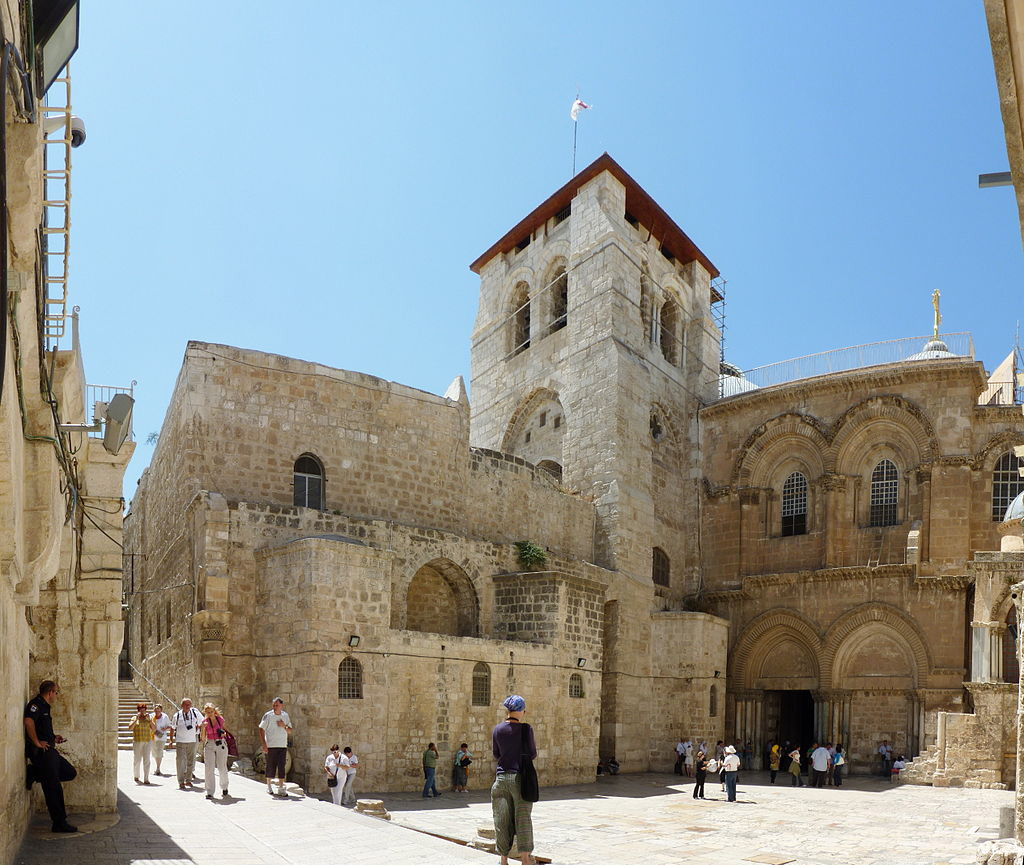 The Church of the Holy Sepulchre,
The Church of the Holy Sepulchre,
traditional site of Jesus’s burial
I would like to offer a few concluding thoughts. I continue to believe, in my own personal way, that the Jesus of history remains an important figure, and therefore, the resurrection is a valuable moment for me because it represents the end of history and the beginning of something else, tangible for some but not for me, knowable but through different senses.
One of the challenging features of post-first-century Christianity is that the Jesus who lived is different from and shaped by the Jesus who lives. I often encounter descriptions of the Jesus of history that are so infused by the resurrected Jesus that the historical one fades and becomes almost indiscernible. As a historian of first-century Christianity, I am intrigued by this process because I would argue that the Jesus who lived in Galilee and taught in Judea was not fully cognizant of what the resurrected Christ would be. He, like us, anticipated salvation or exaltation, but did he fully know who he would be and become? I believe his life was animated by hope and knowledge, frequently like yours and mine. His hope and knowledge may have been fuller and more vivid.
Christianity’s empty tomb is perhaps one of the world’s most compelling religious images. I can understand the fear felt by the earliest followers of Jesus when they experienced the tragedy of his death and the reality of an empty tomb. I too would have been afraid. And as I watch the transition from fear to hope to finding meaning, I gain something as well. I think the creative energy that followed the resurrection, the energy that compelled Jesus’s followers to find meaning in tragedy, is not unlike the modern experience. We seek solace when a loved one departs. We may feel that they were needed for another purpose, or we may feel that our limited perspective cannot grasp God’s plan. If the New Testament teaches us anything, it is that it is OK to feel fear, to be hurt by the loss, and to find creative ways to make sense of our new changed reality going forward. I think that is where hope comes in.
Notes
[1] J. R. R. Tolkien to Christopher Tolkien, 7–8 November 1944, as published in The Letters of J. R. R. Tolkien, ed. Humphrey Carpenter with the assistance of Christopher Tolkien (Boston: Houghton Mifflin, 1981), letter 89, p. 100.
[2] Paul Ricoeur, Essays on Biblical Interpretation, trans. Robert Sweeney (Philadelphia: Fortress Press, 1980), available on https://
[3] Nelson Mandela, Long Walk to Freedom (New York: Little, Brown, 1994).
